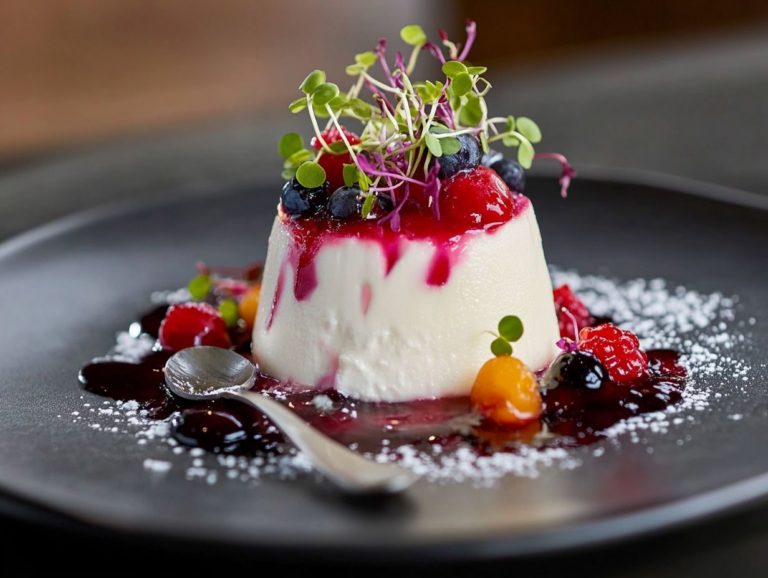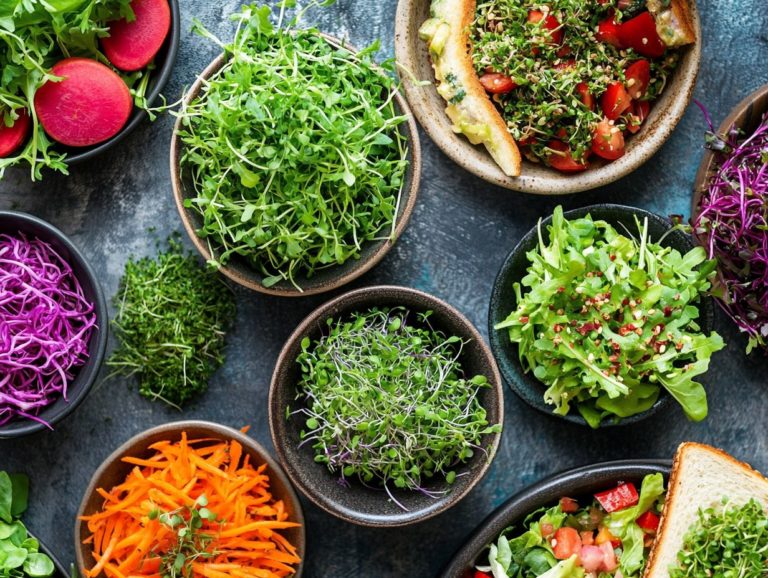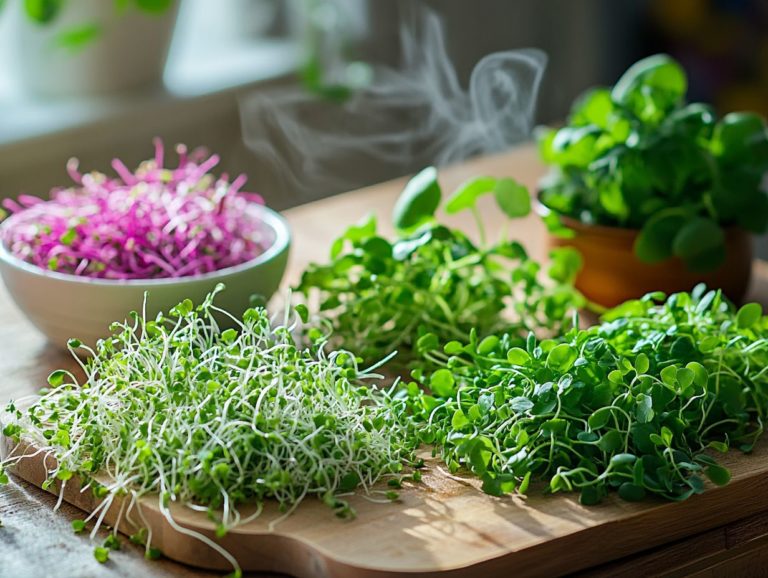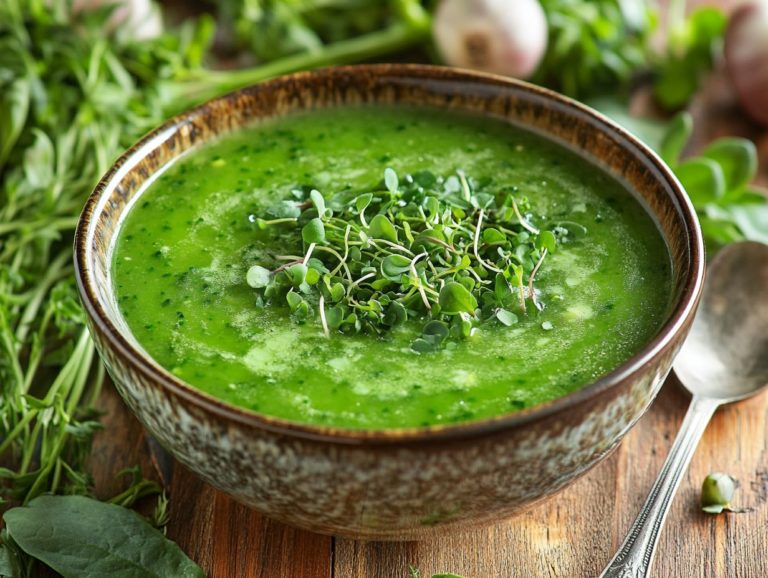2. How to Use Microgreens in Smoothies
Microgreens are tiny, nutrient-dense plants that can transform your smoothies, enhancing both flavor and health benefits. These miniature greens are brimming with vitamins, minerals, and antioxidants, making them the perfect addition to your daily blend of healthy fruits and vegetables.
In this exploration, you’ll uncover what microgreens are and the impressive nutritional advantages they offer. You ll learn how to incorporate them effortlessly into your smoothies.
From selecting the right types of microgreens to washing tips and delectable recipes, you ll find everything you need to elevate your smoothie game.
Get ready to supercharge your health with every sip!
Contents
- Key Takeaways:
- Using Microgreens in Smoothies
- Preparing Microgreens for Smoothies
- Recipes and Tips for Adding Microgreens to Smoothies
- Frequently Asked Questions
- 1. What are microgreens?
- 2. Why should I incorporate microgreens into my smoothies?
- 3. Are there any particular types of microgreens that work best in smoothies?
- 4. Can I grow my own microgreens for use in my smoothies?
- 5. How much microgreens should I add to my smoothie?
- 6. Are there any other ways to use microgreens besides adding them to smoothies?
Key Takeaways:
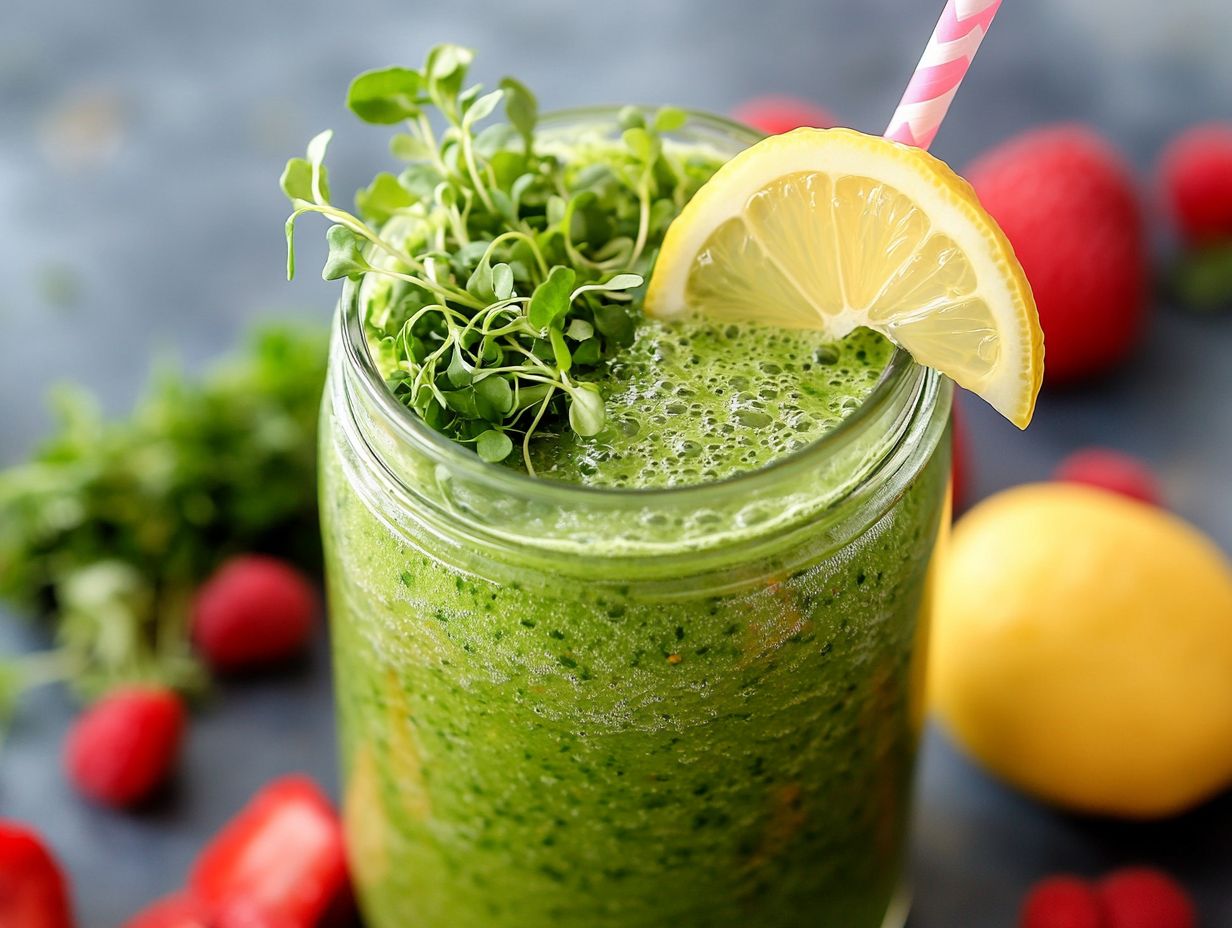
- Adding microgreens to smoothies boosts nutritional value and flavor.
- Popular microgreens for smoothies include broccoli, kale, and pea shoots.
- Wash and store microgreens properly, and experiment with flavors.
What are Microgreens?
Microgreens are young, edible plants that you harvest just after the first true leaves have developed, offering a concentrated source of nutrients, antioxidants, and flavor. These vibrant greens, which include varieties like broccoli, kale, and spinach, as well as pea shoots, are brimming with vitamins and minerals, making them a healthy addition to your diet.
With their tender leaves and stems, they enhance the visual appeal of your dishes and contribute significantly to your health, boosting your overall nutrition with every delightful bite.
The growth process for microgreens is refreshingly simple requiring just soil, light, and water for their rapid development. You can have them ready to harvest in as little as 7 to 21 days.
As they gain traction in the culinary world, chefs and home cooks are discovering how these tiny greens can elevate their dishes, adding a burst of flavor while serving as a nutrient-dense topping.
Their rich profile of vitamins, such as A, C, and K, makes them appealing for anyone looking to enhance their meals with wholesome ingredients, ultimately promoting better health and well-being.
Nutritional Benefits
Microgreens are far more than just a decorative touch; they are nutrient-rich foods brimming with essential vitamins, minerals, and antioxidants that can elevate your overall health. These tiny greens have more nutrients than their larger versions, making them an excellent choice for vital nutrients that bolster your immune system, aid digestion, and promote overall wellness.
Loaded with vitamins A, C, E, and K, along with minerals like calcium, magnesium, and potassium, these greens provide a wide range of health benefits. The antioxidants they contain help fight oxidative stress, while the fiber contributes to digestive health, ensuring your gut stays happy.
By regularly incorporating microgreens into your meals, you not only enhance flavors but also effortlessly boost your nutrient intake. This leads to increased energy levels and stronger immunity, supporting a healthy diet. Their impressive phytochemical profile plays a crucial role in reducing inflammation and supporting heart health, making them a critical addition to any well-balanced diet.
Using Microgreens in Smoothies
Incorporating microgreens into your smoothies presents a delicious and innovative opportunity to elevate the nutritional value of your drink, transforming it into a health-rich meal.
By adding microgreens, you ll enhance the flavor profile of your smoothies and infuse them with vitamins, antioxidants, and essential nutrients that support your overall well-being.
Try adding microgreens to your next smoothie and taste the difference!
Why Add Microgreens to Smoothies?
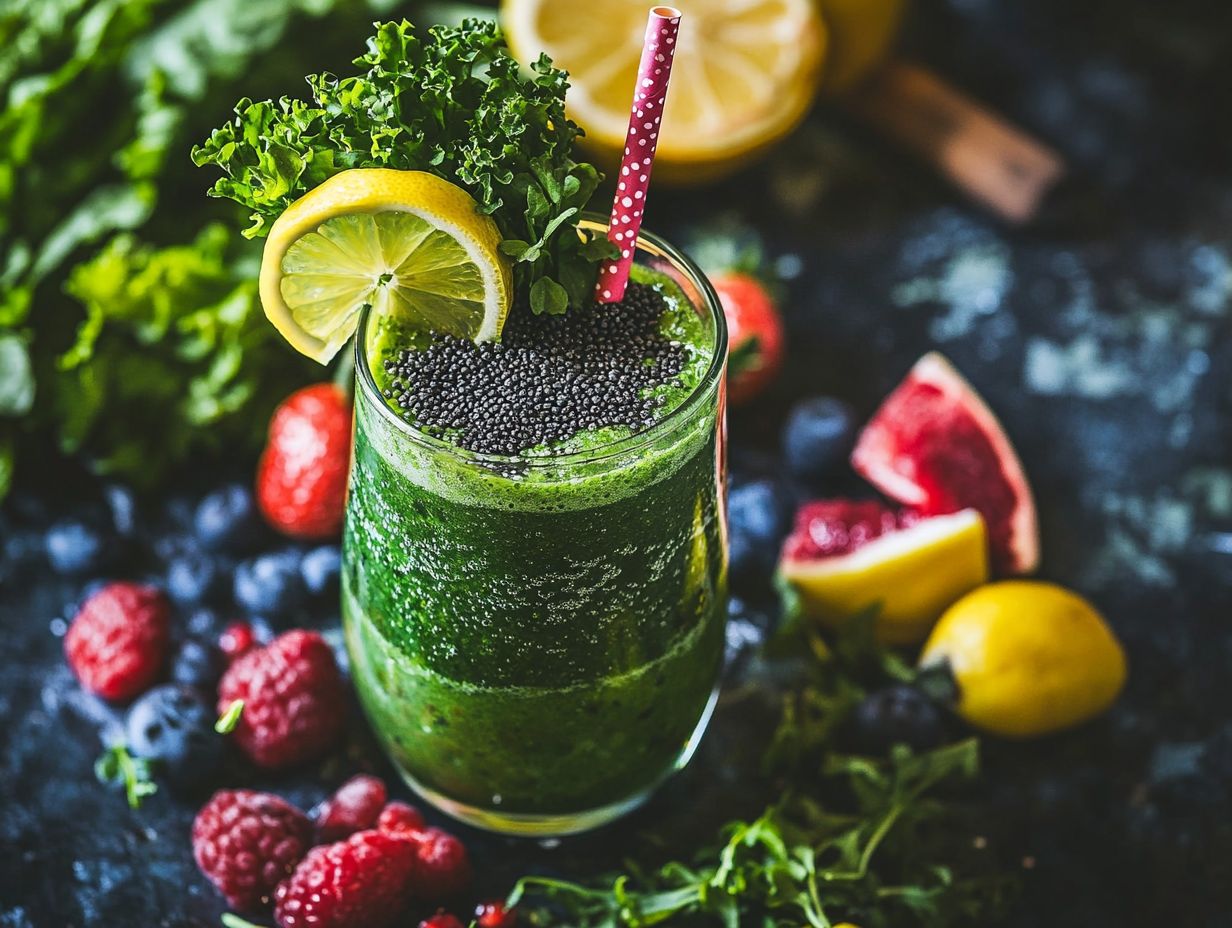
Incorporating microgreens into your smoothies can revolutionize your health and nutrition. These small greens are packed with antioxidants, vitamins, and minerals, making them perfect for a healthy breakfast.
Add microgreens to elevate the nutritional value of your smoothies. They introduce unique flavors and textures that can transform a regular blend into a delicious treat.
Microgreens come in various flavors, from spicy to sweet. Pair them with fruits like pineapple or frozen berries for an enjoyable smoothie experience.
Types of Microgreens to Use
Explore a delightful variety of microgreens that elevate your smoothies. Consider popular choices like broccoli, kale, and spinach for a burst of nutrients.
These microgreens are rich in vitamins, minerals, and antioxidants that boost immunity and digestion. For example, arugula microgreens add a peppery kick while providing calcium and iron.
Beet microgreens offer sweetness and color, along with heart-supporting antioxidants. Sunflower microgreens bring a crunchy texture and nutty flavor, promoting overall wellness.
Incorporate these greens for smoothies that are visually stunning and packed with essential nutrients like protein and healthy fats.
Preparing Microgreens for Smoothies
Preparing microgreens properly maximizes their health benefits. Wash and store them correctly to keep them fresh and flavorful.
This attention to detail makes them great for your smoothie recipes.
Washing and Storing
To keep your microgreens fresh, wash and store them right after bringing them home. Gently rinse under cool water and pat dry to remove dirt.
Store them in a breathable container, like a paper towel-lined box, to allow air circulation. Avoid airtight containers, as they trap moisture and lead to spoilage.
Storing in the refrigerator maintains their crispness and vibrant flavor. Handle microgreens with care to unlock their potential and support your health routines.
Recipes and Tips for Adding Microgreens to Smoothies

Crafting smoothies with microgreens offers a delightful and healthful experience. Create recipes that nourish your body.
This fusion of fun and wellness transforms your smoothie-making into a fun way to cook that supports your health in the most delicious way.
Flavor Combinations and Proportions
When you blend microgreens into smoothies, choosing the right flavor combinations and proportions is essential for crafting a truly delightful taste. By balancing the earthy notes of microgreens with sweet fruits like bananas, oranges, and berries, you can create a delicious and nutritious drink that kids will adore.
Incorporating tangy elements such as kiwi or pineapple elevates the overall flavor profile, adding a refreshing twist. A hint of avocado adds creaminess and boosts healthy fats, making your smoothie more satiating.
For an extra nutritional kick, try adding a spoonful of nut butter or a sprinkle of chia seeds or hemp seeds to enhance omega-3 fatty acids, a type of healthy fat important for your body. A good rule of thumb is to use one cup of microgreens, two cups of fruits, and a half cup of liquid to prevent the mix from becoming too thick.
This balance makes every sip a nutritious delight that kids will love.
Blending Techniques for Best Results
Mastering the art of blending is essential for creating smooth, creamy smoothies that seamlessly integrate microgreens and other ingredients. Start with liquids before adding solids and leverage high-speed blending to achieve a velvety texture that unlocks the full potential of your microgreens’ nutrients.
Incorporating these vibrant greens enhances the nutritional value and flavor of your smoothie. For a flawless blend, chop or tear the microgreens beforehand to help them merge effortlessly with ingredients like fruits and yogurts. You can learn more about How to Incorporate Microgreens into Your Diet for added benefits.
Investing in a high-performance blender can make a remarkable difference. Models equipped with powerful motors and sharp blades can pulverize tougher greens, ensuring a consistent blend. Don t overlook the importance of experimenting with ingredient order placing softer items on top can also contribute to that luscious consistency you desire.
Final Thoughts and Recommendations
Incorporating microgreens into your smoothies is a straightforward yet impactful way to enhance your nutrition and the flavors of your meals. With a seemingly limitless array of recipes and combinations, you can whip up delicious blends that tantalize your taste buds and bolster your health.
These nutrient-dense greens are full of good nutrients and can transform an ordinary smoothie into a powerhouse of health benefits. Incorporating the top 5 microgreens for smoothies adds even more flavor and nutrition. Their versatility makes them easy to weave into various recipes, whether you favor a bright citrusy blend or a rich berry concoction.
Maximize the nutritional benefits by adding a handful of microgreens to your daily routine. They enhance taste and deliver essential nutrients that support overall vitality. By experimenting with varieties like arugula or pea shoots, you can keep your smoothies exciting and beneficial.
Embrace microgreens; it s a delicious leap toward a healthier diet!
Frequently Asked Questions
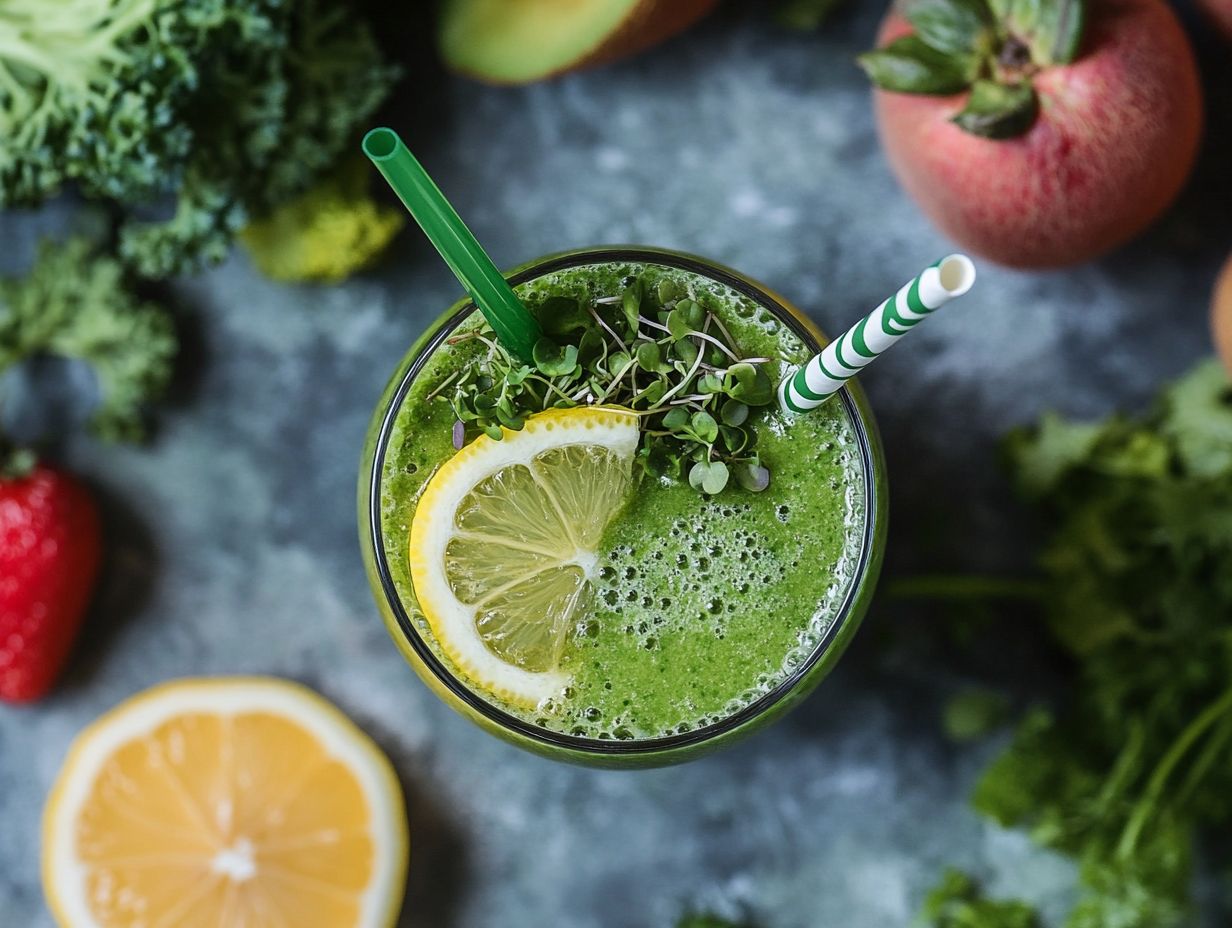
1. What are microgreens?
Microgreens are young, edible plants harvested after their first true leaves appear. They are packed with nutrients and can add vibrant flavor and texture to your smoothies. To use them, simply add a handful to your blender along with your other ingredients.
2. Why should I incorporate microgreens into my smoothies?
Microgreens are very nutrient-dense. They contain high levels of vitamins, minerals, and antioxidants. Adding them to your smoothies boosts the nutritional value without changing the taste significantly.
3. Are there any particular types of microgreens that work best in smoothies?
While most microgreens can be used in smoothies, some have a stronger or more distinct flavor. For a more subtle taste, try using microgreens like broccoli, pea shoots, or sunflower. For a bolder flavor, opt for microgreens like radish, arugula, or mustard greens.
4. Can I grow my own microgreens for use in my smoothies?
Absolutely! Growing your own microgreens is easy and cost-effective. You can easily get started by purchasing a growing kit! Or, buy some seeds and plant them in a shallow tray with soil. It s fun and rewarding! In just a few weeks, you’ll have fresh microgreens ready to use in your smoothies.
5. How much microgreens should I add to my smoothie?
The amount of microgreens you add to your smoothie is entirely up to your preference. We recommend starting with a small handful and adjusting based on your taste. Feel free to experiment with different amounts to find the perfect balance for you.
6. Are there any other ways to use microgreens besides adding them to smoothies?
You can also use microgreens in a variety of dishes, including salads, sandwiches, and wraps. They make great garnishes in soups or toppings for omelets. Get creative and try incorporating microgreens into your favorite meals for an extra boost of nutrition.
Start incorporating microgreens into your smoothies today for a healthier lifestyle!

